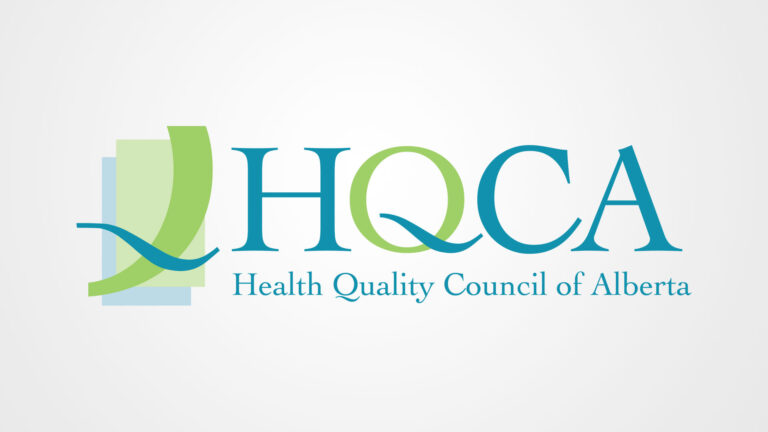
Am I eligible to be admitted to the clinical pharmacist register?
How can I open a new pharmacy?
Have I met the requirements to become a pharmacy technician?
These are a few of the questions that the Alberta College of Pharmacy’s (ACP) registration team answers daily. Their role is to oversee the registration of pharmacists and pharmacy technicians and the licensing of pharmacies, ensuring they meet the necessary requirements to be admitted to the register.
ACP’s registration director, Debbie Lee, is responsible for leading the college’s registration department. She explains that the work of the department, to put it simply, is divided into two functions: registering people and licensing places.
“There is often some confusion about terminology,” Debbie said. “ACP registers pharmacists and pharmacy technicians and licenses pharmacies.” In other words, pharmacy professionals have practice permits and are listed on their respective professional registers and licensees are issued licences to operate a pharmacy.
Registering pharmacy professionals
Even after their education is complete, an individual cannot use the titles of “pharmacist” or “pharmacy technician” until they complete the registration process with ACP. Debbie outlined the importance of registration, explaining that this is one way that ACP is able to offer assurances to the public that pharmacy professionals are qualified and ready to practise.
“ACP’s registration process defines who can undertake the roles of a pharmacist or pharmacy technician,” Debbie said. “Even after graduation, there are a number of steps before registration to ensure pharmacists and pharmacy technicians are adequately prepared.”
 Diva Niaz (Bsc. Pharm, MSc, RPh, APA), a pharmacist in Edmonton, recalled completing this process after she graduated from the Faculty of Pharmacy and Pharmaceutical Sciences at the University of Alberta.
Diva Niaz (Bsc. Pharm, MSc, RPh, APA), a pharmacist in Edmonton, recalled completing this process after she graduated from the Faculty of Pharmacy and Pharmaceutical Sciences at the University of Alberta.
“After I completed my education, I used ACP’s website and the available resources to make sure I checked all of the boxes for registration,” she said. “There were lots of steps to consider!”
After graduation, pharmacists and pharmacy technicians must pass exams, complete structured practical training, provide criminal record checks, obtain professional liability insurance, and more before they can apply to be added to ACP’s registers.
While they are in the process of completing these steps, new graduates may initially register as a provisional pharmacy technician or pharmacist intern. Once all of the requirements are met and the individual is approved to be added to the appropriate ACP register, the restricted titles of pharmacy technician and pharmacist can be used.
There may be some individuals who work in a pharmacy who are not regulated by ACP. These non-regulated members must be directly supervised by a pharmacist or pharmacy technician and may only perform limited tasks in accordance with legislation.
Debbie summarized why restricted titles matter.
“There are defined titles and roles for pharmacy professionals to ensure these individuals have the knowledge and the skills to be able to fulfill their roles and provide quality pharmacy services,” she said.
When a patient visits a pharmacy and speaks to someone with a nametag that says “pharmacist,” the patient can trust that the person helping them has received the proper education and met the requirements to provide safe, effective, and appropriate care.
Diva, a pharmacy owner and licensee, provided an example of how this impacts patient care.
“We designed our physical layout with our patients and customers in mind; the first person they speak to is a pharmacist,” she said. “When patients know they are speaking to a pharmacist right away, the process of building a professional relationship can start immediately.”
Licensing pharmacies
According to the Pharmacy and Drug Act, pharmacy services (e.g., storing, compounding, dispensing, or selling of drugs) can only be provided from a licensed pharmacy with an appropriate category of licence. The only exception is for institution pharmacies, which are operated by Alberta Health Services (e.g., in hospitals). The following categories of licence may be issued by ACP under the Pharmacy and Drug Act.
A community pharmacy licence is the most common category of licence. This licence is required to provide pharmacy services to patients.
In 2022, Diva identified a need in the market for a service-oriented pharmacy within the Oliver community in Edmonton, which led to her opening PureCare Pharmacy. She wanted to play a meaningful role in the community and work closely with patients.
“During the pandemic, we really saw a rising need for health services, especially in downtown Edmonton. Our healthcare system is often overwhelmed and access to healthcare practitioners is difficult to obtain,” said Diva. “We opened PureCare with a goal of providing health services and educating the public and our community about the skills and services a pharmacist can offer. Our pharmacy and our talented staff can help close gaps in care. We were eager to get started, however, we needed to carefully read and understand the steps involved in the licensing process.”
Diva recalled a number of steps and considerations in the process of obtaining a licence to open a community pharmacy.
“I remember reviewing ACP’s Foundational Requirements and realizing there are many aspects in a pharmacy that may be overlooked,” said Diva. “For example, counters must have a minimum workspace area and entrances, or aisles, are required to be a certain width – every detail must be well thought out in the pharmacy space.”
A mail order pharmacy licence is required, in addition to a community pharmacy licence, when the pharmacy provides services to patients who do not regularly receive in-person care. Pharmacies that hold a mail order licence must ensure patients who receive mail order services receive the same quality of care as those patients who receive in-person care.
A compounding and repackaging pharmacy licence is required to compound or repackage drugs for another licensed pharmacy or institution pharmacy that will dispense or sell the compounded or repackaged drugs to a patient. Pharmacies do not need a compounding and repackaging licence to provide these services directly to their own patients; this licence type is only required if the compounded or repackaged drugs are being sold to another pharmacy for resale.
A satellite pharmacy licence is only issued on an exceptional basis when patients require a pharmacy service that cannot be effectively provided in a community pharmacy. This licence type may be added as an extension of services to an existing community pharmacy licence in specific, unique circumstances. The decision to issue a satellite pharmacy licence lies with the registrar, who considers accessibility and the need for services hindered by demographic or geographic factors.
Regardless of licence type, patients must receive a level of care that meets all standards of practice.
Licensees
Pharmacy licences are issued to licensees: pharmacists in good standing with ACP who must meet a number of additional requirements, including completion of ACP’s Licensee Education Program.
While the pharmacy licence must be issued to a pharmacist, the pharmacy may be owned by a non-regulated individual or through a different ownership structure (e.g., a corporation, partnership, or trust). However, it is the licensee who holds the pharmacy licence; therefore without a licensee, a pharmacy does not have a pharmacy licence and the pharmacy must not operate. There are a number of different ownership structures but a licence to operate a pharmacy can only be issued to a qualified pharmacist.
It is the responsibility of the licensee to personally manage and supervise the operation of the pharmacy and the practices of all pharmacy team members.
“I learned quickly that a licensee wears so many hats and is responsible for all areas of the business,” said Diva. “As a pharmacist, I am used to upholding clinical and professional responsibilities but as a licensee there is more added to it, especially in the areas of leadership and management.”
The licensee’s management role entails additional responsibilities to ensure everything in the pharmacy meets requirements. Licensees need to internalize the standards and make appropriate decisions for their pharmacies.
Whether they’re a licensee, a pharmacist, or a pharmacy technician, most registrants will likely connect with the registration team at different stages of their careers to apply for registration, apply for a new pharmacy licence, or renew or manage their annual practice permit or pharmacy licence. These processes are in place to provide valuable safeguards that ensure registrants and pharmacies are prepared to uphold excellence in pharmacy practice.




